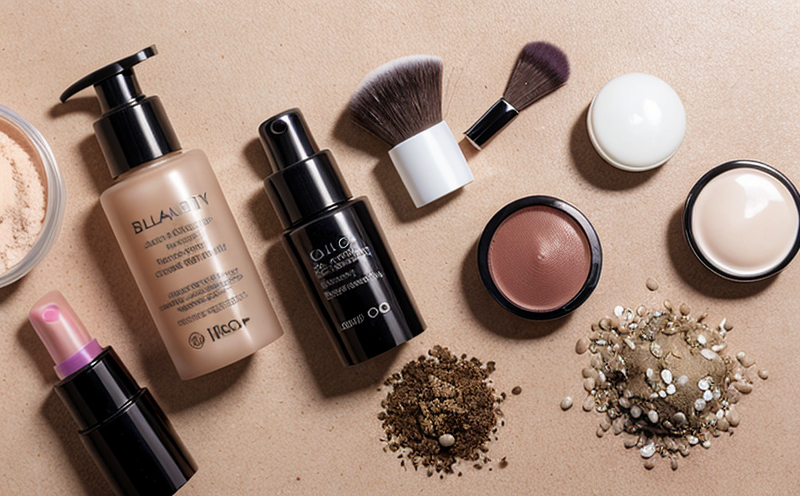OECD 301 Ready Biodegradability Testing for Cosmetics
The OECD 301 test method is a fundamental tool in assessing the environmental impact of cosmetic products, particularly focusing on their biodegradability. This test is crucial for ensuring that cosmetic ingredients do not persist in the environment and degrade harmfully over time.
During this testing process, samples are incubated under controlled conditions to simulate real-world exposure to natural microbial communities. The objective is to determine whether the tested substance can be readily biodegraded within a specified timeframe. This method aligns with international standards such as OECD 301A for the determination of ready biodegradability.
The test involves placing a defined amount of the cosmetic sample in a specifically designed medium, which mimics aquatic environments like rivers or oceans. The sample is then exposed to microorganisms that naturally occur in these environments. Over time, the rate at which the sample disappears and carbon dioxide (CO2) is produced indicates its biodegradability.
This test is particularly important for cosmetic products as it helps manufacturers understand how their formulations interact with natural ecosystems. The results provide critical insights into whether a product might contribute to environmental pollution or if it can be safely disposed of without harming aquatic life or soil health.
The OECD 301 method is not only a regulatory requirement but also an essential tool for companies committed to sustainable practices and environmental responsibility. It ensures that cosmetic products meet stringent international standards, thereby protecting both human health and the environment.
For quality managers and compliance officers, this test provides assurance that their products comply with global regulations such as REACH in Europe or TSCA in North America. For R&D engineers, it offers a valuable tool for innovation and improvement of product formulations to ensure they are not only effective but also environmentally friendly.
In summary, the OECD 301 test is an indispensable part of the cosmetic industry’s commitment to sustainability. By conducting this test, companies can demonstrate their dedication to reducing environmental impact and promoting a healthier planet.
- Reduces potential for environmental harm by ensuring products biodegrade naturally
- Aligns with international standards enhancing global market access
- Supports sustainable product development through continuous improvement
- Facilitates compliance with regulatory requirements in multiple jurisdictions
Why It Matters
The OECD 301 Ready Biodegradability Testing for Cosmetics is essential because it directly addresses the environmental impact of cosmetic products. By determining whether a substance can be readily biodegraded, this test helps prevent the accumulation of harmful chemicals in aquatic ecosystems.
Biodegradation is critical to environmental sustainability as it ensures that waste materials from cosmetics do not persist indefinitely. In natural water bodies, persistent substances can lead to toxic effects on aquatic organisms and disrupt ecosystem balance. This testing method provides a means to mitigate such risks by identifying ingredients or formulations that pose minimal harm.
From an economic perspective, ensuring biodegradability also helps in avoiding future liabilities associated with environmental pollution. Companies that comply with this test can avoid costly legal actions and negative publicity. Additionally, the test supports the development of eco-friendly products, which are increasingly sought after by consumers.
The OECD 301 method is particularly relevant for companies operating globally as it ensures consistent quality across different markets. Compliance with international standards enhances a company's reputation and market credibility, contributing to long-term business success.
Why Choose This Test
Selecting the OECD 301 Ready Biodegradability Testing for Cosmetics is a strategic decision that offers numerous advantages. Firstly, it ensures regulatory compliance with international standards such as OECD guidelines, which are widely recognized and accepted across various jurisdictions.
Secondly, this test provides valuable insights into product performance and environmental impact. By understanding the biodegradability of cosmetic ingredients, companies can refine their formulations to enhance sustainability without compromising efficacy or quality.
The method also supports innovation in eco-friendly product development. As consumer demand for green products continues to grow, companies that invest in sustainable testing methods like OECD 301 are better positioned to meet these demands and stay ahead of competitors.
In addition, this test fosters transparency and trust with stakeholders, including customers, regulatory bodies, and investors. Demonstrating a commitment to environmental responsibility can significantly enhance brand reputation and customer loyalty.
Finally, the OECD 301 method helps mitigate risks associated with potential environmental damage from cosmetic products. By conducting this test early in the product development process, companies can identify and address any issues that could lead to harmful environmental impacts.
Environmental and Sustainability Contributions
- Promotes Natural Degradation: Ensures that cosmetic ingredients do not accumulate in the environment, promoting natural degradation processes.
- Reduces Pollution Risk: Minimizes the risk of pollutants from cosmetics entering aquatic ecosystems and affecting marine life.
- Fosters Sustainable Practices: Encourages sustainable product development by identifying ingredients that are environmentally friendly.
- Enhances Reputation: Builds a positive brand image through demonstrated commitment to environmental responsibility.





